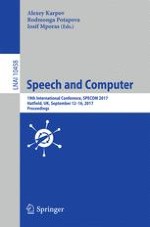2017 | Book
Speech and Computer
19th International Conference, SPECOM 2017, Hatfield, UK, September 12-16, 2017, Proceedings
Editors: Alexey Karpov, Rodmonga Potapova, Iosif Mporas
Publisher: Springer International Publishing
Book Series : Lecture Notes in Computer Science
